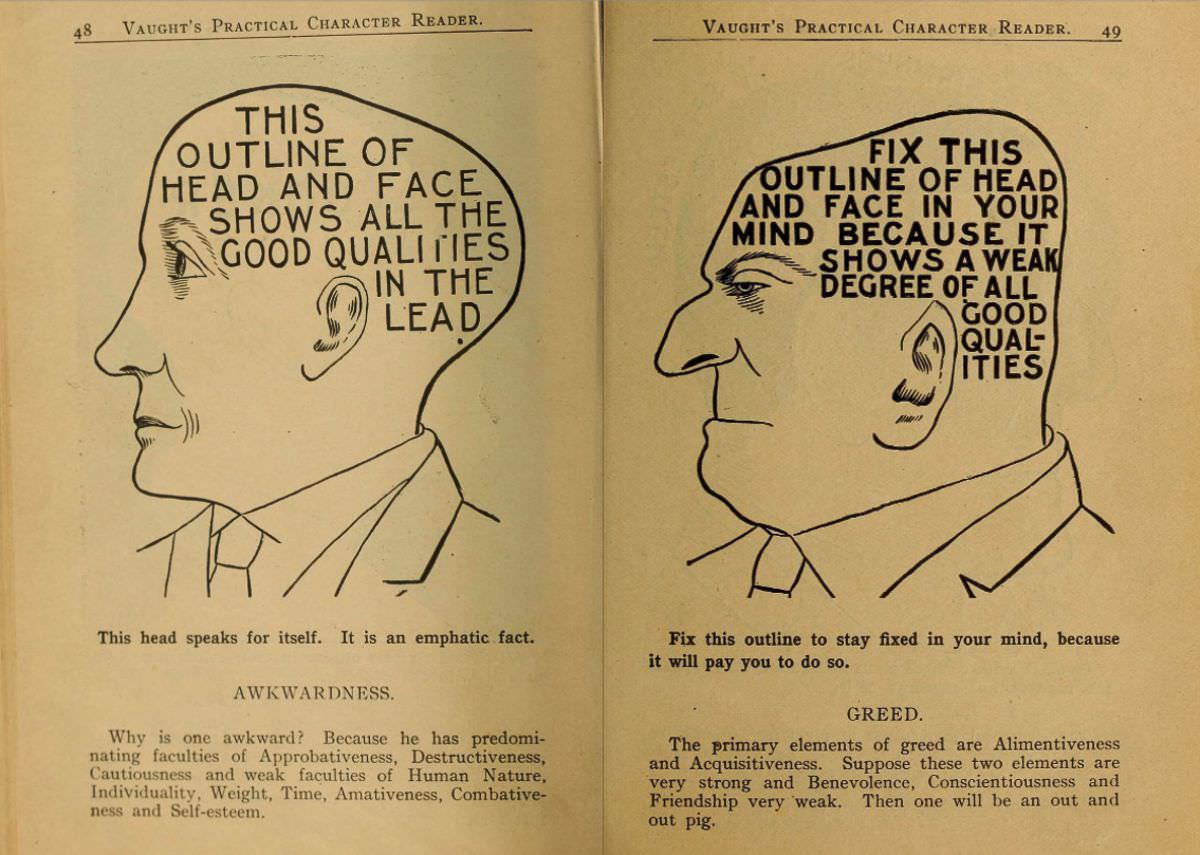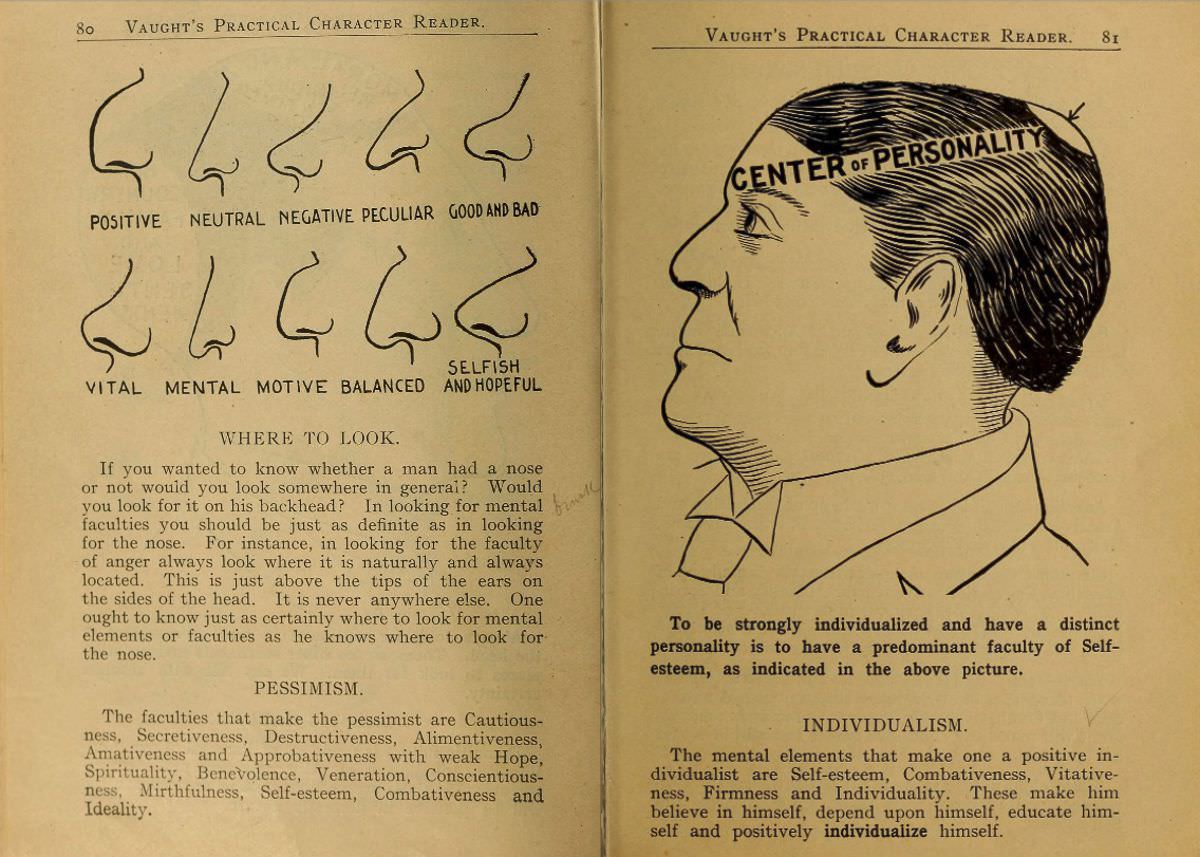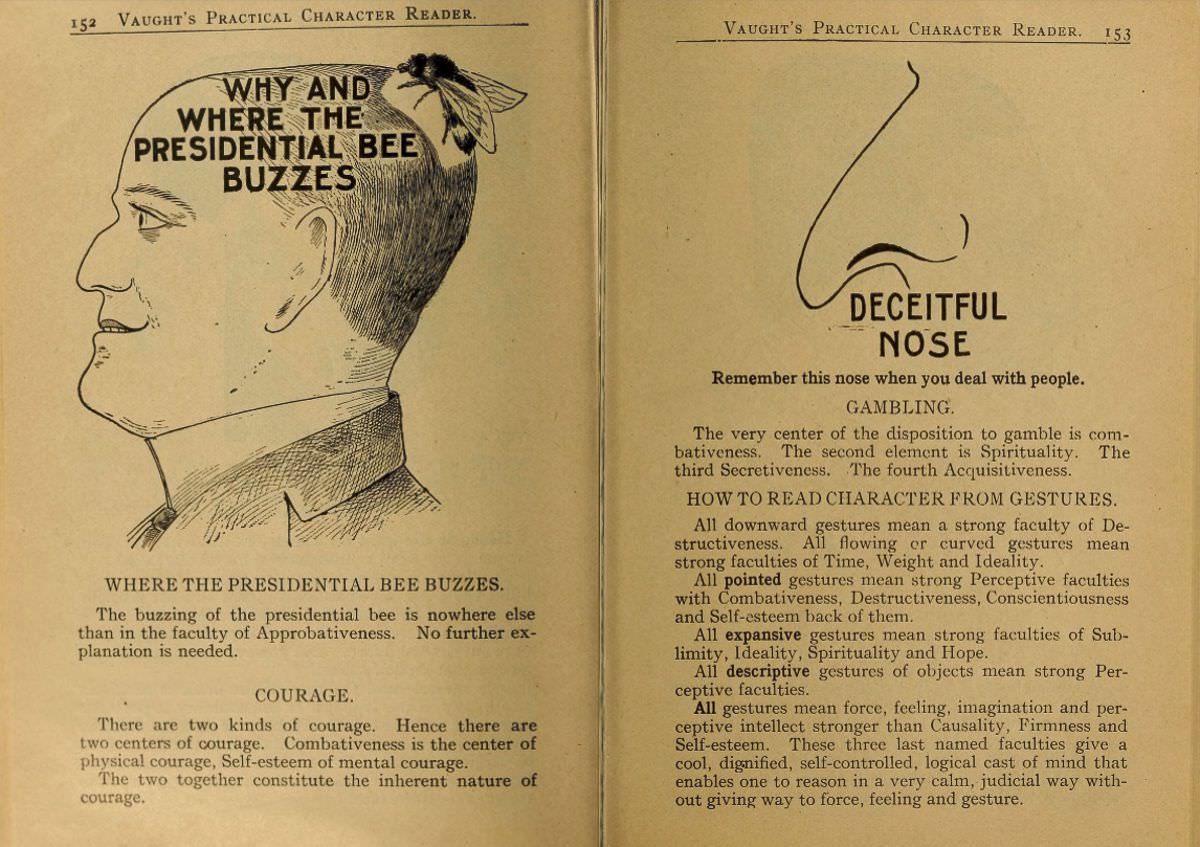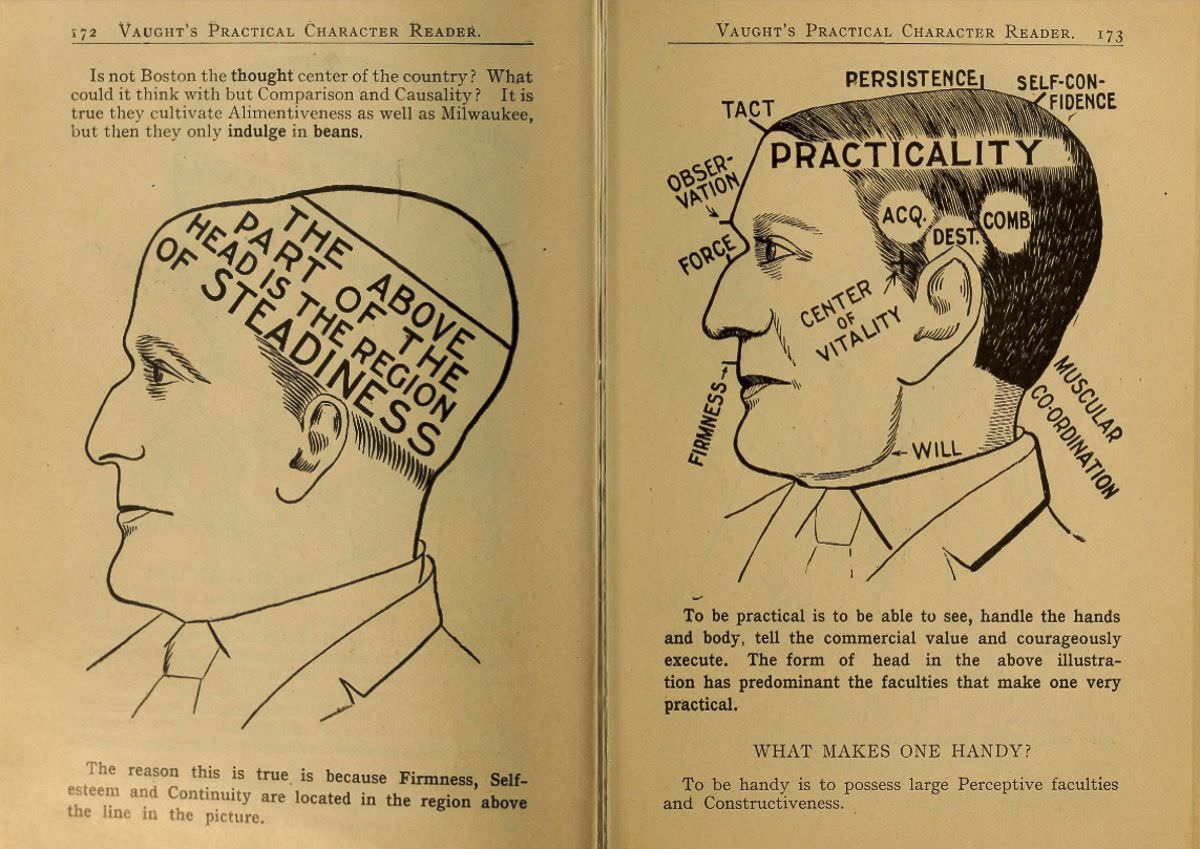These photos are from a book about phrenology and are packed with strange theories and illustrations. Chicago phrenologist LA Vaught published the book in 1902. In the book, 42 elements of human nature are discussed (including acquisitiveness, generosity, amativeness, and weight) and how these traits manifest in people’s bodies. In the Preface, the author states that the purpose of this book is to introduce people to the elements of human nature and enable them to understand their behavior. The illustrator provides diagrams and pictures throughout the book, cementing it as a classic in the genre of unintentional humor. Over fifty thousand examinations have been conducted to prove the truthfulness of this information. More than a million observations have been made to confirm the examinations. The facts can be proved by all who are willing to take the unprejudiced effort. It is ready for use.
The study of phrenology is based on measuring bumps on the skull to predict mental tendencies. It is based on the concept that the brain is the organ of the mind and that certain parts of the brain perform specific functions. Brains are composed of different muscles, and those used more often are bigger, resulting in different skull shapes. As a result, everyone had bumps on their skull in different locations. Because these brain muscles weren’t used as frequently, they remained small and weren’t visible on the exterior of the skull. Both of those ideas have a basis in reality; however, phrenology is generalized beyond empirical knowledge unexpectedly. The idea that a person’s Personality can be predicted by measuring the contour of their skull has been discredited by empirical studies. The discipline was developed by German physician Franz Joseph Gall in 1796 and was influential in the 19th century, especially between 1810 and 1840..
Read more
In 1820, the Edinburgh Phrenological Society was established as the leading British center for phrenology. According to phrenologists, each mental faculty is represented in a different area of the brain. There was a belief that these areas were proportional to a person’s propensities. Organ importance is derived from its relative size to other organs. According to the theory, the cranial skull accommodates the various dimensions of these brain areas like a glove on the hand, so a person’s ability to exhibit a particular personality characteristic can be determined simply by measuring the area of the skull that overlies the brain area that corresponds to that trait. Personality and character are the focus of phrenology, as opposed to skull size, weight, and shape, and facial features are the focus of physiognomy. Franz Joseph Gall believed that the brain is composed of 27 different organs that determine Personality, 19 of which exist in other animal species. A phrenologist would feel for enlargements and indentations in the skulls of their patients with their fingertips and palms.
The phrenologist assesses a patient’s Personality and temperament based on the size and shape of their skulls. In most cases, the phrenologist used a tape measure to measure the overall size of the head, and a craniometer, a particular version of a caliper, in rarer cases. After mainstream phrenology ended, instruments to measure cranium sizes continued to be used. Phrenologists commonly use drawings of individuals with particular traits to determine a person’s character. Thus many phrenology books display photographs.





































